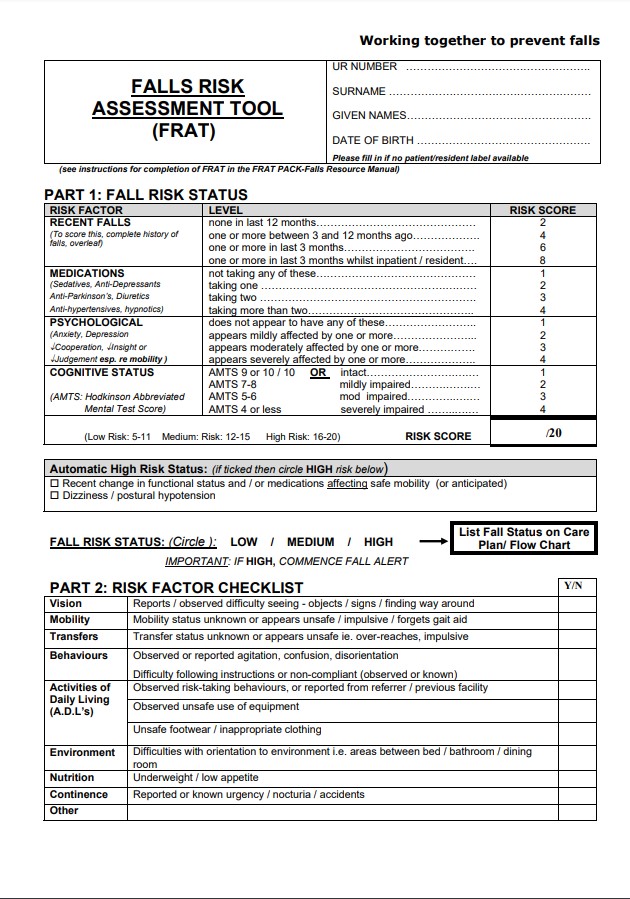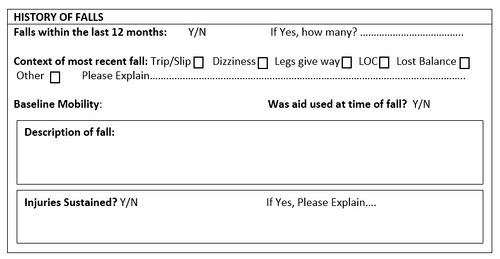Dementia Fall Risk Can Be Fun For Anyone
Table of ContentsWhat Does Dementia Fall Risk Do?What Does Dementia Fall Risk Do?Dementia Fall Risk Things To Know Before You BuyThe 4-Minute Rule for Dementia Fall Risk
A loss threat evaluation checks to see exactly how most likely it is that you will certainly fall. The evaluation usually includes: This includes a collection of questions about your total health and if you've had previous drops or issues with balance, standing, and/or walking.STEADI consists of screening, analyzing, and treatment. Treatments are referrals that might reduce your danger of falling. STEADI includes three steps: you for your danger of succumbing to your threat elements that can be improved to attempt to avoid falls (for example, equilibrium problems, impaired vision) to decrease your risk of falling by utilizing efficient techniques (as an example, giving education and learning and resources), you may be asked several concerns consisting of: Have you fallen in the previous year? Do you really feel unstable when standing or walking? Are you fretted about falling?, your copyright will certainly evaluate your toughness, equilibrium, and stride, utilizing the adhering to loss evaluation devices: This examination checks your stride.
If it takes you 12 secs or more, it may imply you are at higher threat for an autumn. This test checks strength and balance.
Move one foot midway onward, so the instep is touching the huge toe of your other foot. Move one foot fully in front of the other, so the toes are touching the heel of your various other foot.
Some Known Factual Statements About Dementia Fall Risk
Many drops occur as a result of numerous contributing elements; for that reason, handling the risk of falling starts with determining the elements that contribute to drop danger - Dementia Fall Risk. A few of one of the most pertinent danger elements consist of: Background of previous fallsChronic medical conditionsAcute illnessImpaired gait and balance, lower extremity weaknessCognitive impairmentChanges in visionCertain high-risk medicines and polypharmacyEnvironmental elements can also enhance the threat for falls, consisting of: Poor lightingUneven or harmed flooringWet or unsafe floorsMissing or harmed hand rails and order barsDamaged or improperly equipped equipment, such as beds, mobility devices, or walkersImproper usage of assistive devicesInadequate supervision of the people staying in the NF, including those that exhibit hostile behaviorsA effective loss danger administration program needs a thorough professional analysis, with input from all participants of the interdisciplinary team

The treatment plan must also consist of treatments that are system-based, such as those that promote a secure environment (suitable lighting, hand rails, get this page bars, etc). The performance of the interventions should be assessed periodically, and the treatment plan changed as essential to reflect modifications in the autumn threat assessment. Executing a fall risk monitoring system making use of evidence-based ideal method can decrease the occurrence of drops in the NF, while restricting the potential for fall-related injuries.
6 Simple Techniques For Dementia Fall Risk
The AGS/BGS standard suggests screening all grownups matured 65 years and older for autumn risk every year. This testing contains asking people whether they have actually fallen 2 or more times in the previous year or sought medical focus for a loss, or, if they have not fallen, whether they really feel unstable when walking.
Individuals that have fallen once without injury ought to have their equilibrium and gait examined; those with gait or equilibrium abnormalities must obtain extra analysis. A background of 1 fall without injury and without stride or balance issues does not warrant additional analysis past over at this website continued annual loss threat screening. Dementia Fall Risk. A fall risk evaluation is needed as part of the Welcome to Medicare evaluation

Getting The Dementia Fall Risk To Work
Documenting a falls history is among the quality indicators for loss prevention and administration. A critical component of threat analysis is a medicine review. Several courses of medicines enhance fall risk (Table 2). Psychoactive medicines in specific are independent forecasters of drops. These medications often tend to be sedating, change the sensorium, and hinder equilibrium and stride.
Postural hypotension can often be eased by decreasing the dosage of blood pressurelowering medicines and/or quiting drugs that have orthostatic hypotension as a negative effects. Use above-the-knee support pipe and copulating the head of the bed boosted may likewise minimize postural decreases in high blood pressure. The preferred aspects of a fall-focused checkup are received Box 1.

A Pull time higher than or equal to 12 secs recommends high autumn threat. Being not able to stand up from a chair of knee height without making use of one's arms shows increased loss risk.